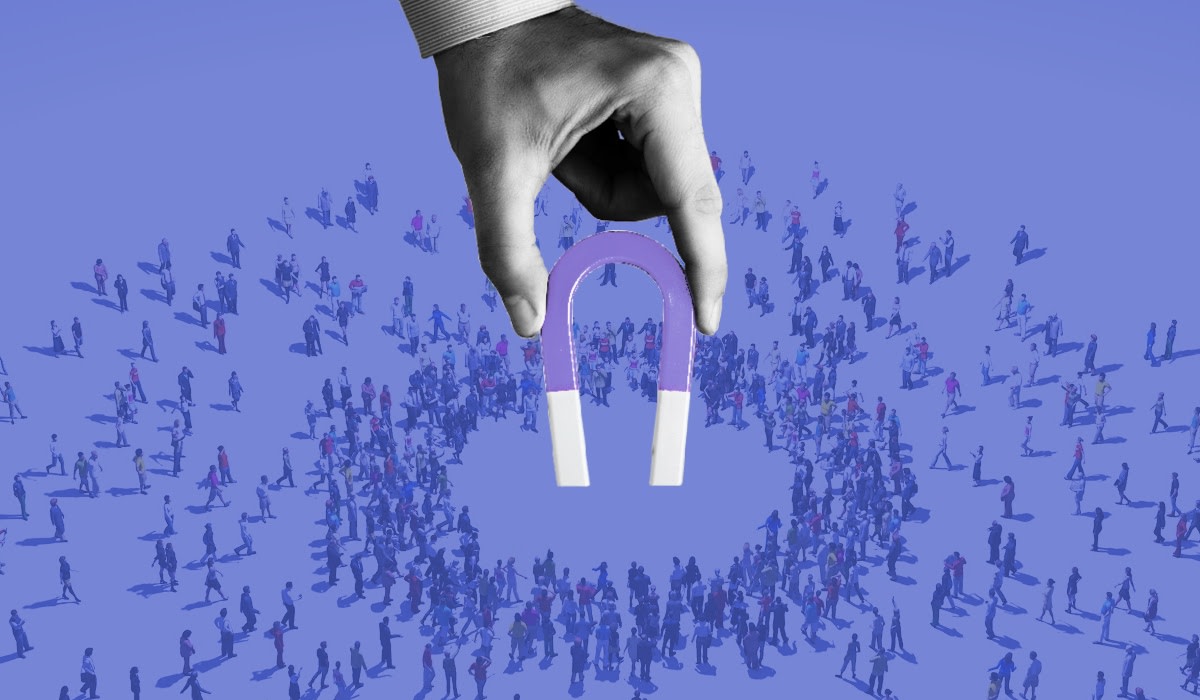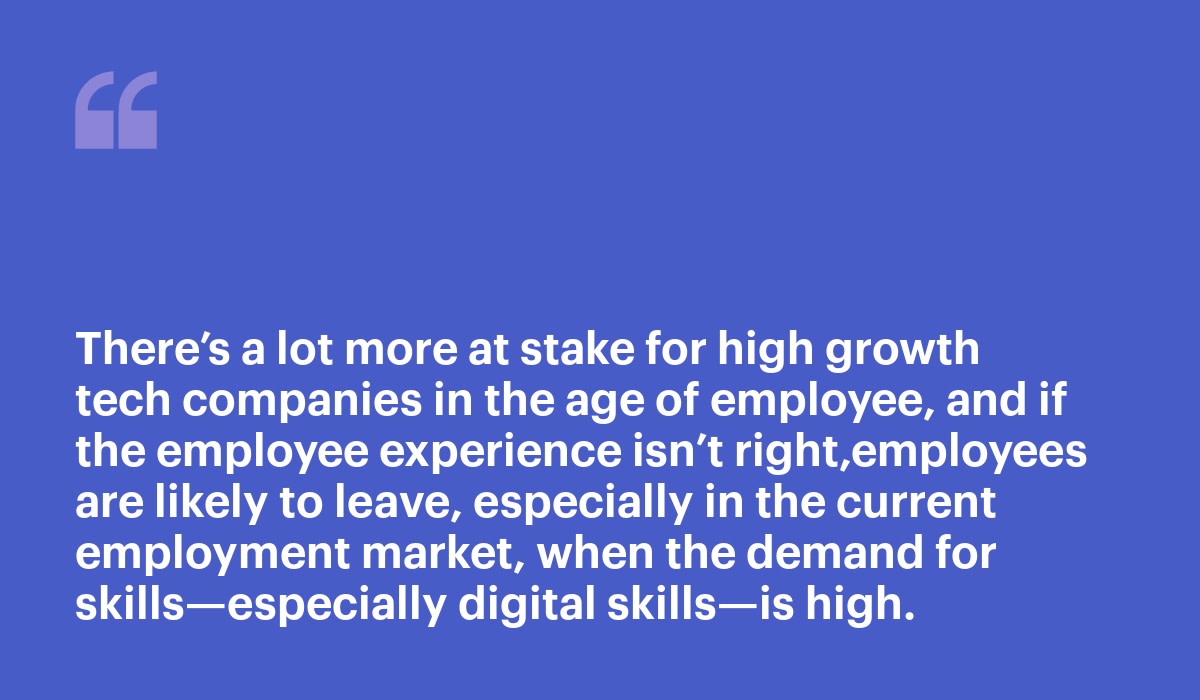Top 3 Employee Retention Tips for High-Growth Tech Companies
If the employee experience isn’t right, employees are likely to leave. Here are our top three employee retention tips for high-growth tech companies.

Remember when “Casual Fridays” and table tennis in the break room set an employer apart as a great place to work? Consider those days another casualty of the pandemic. Employees now have more options about how, where, and when they work. This labour fluidity is an opportunity and a problem for high-growth technology companies already grappling with employee retention issues driven by poor diversity and inclusion practices, toxic work cultures, and unreasonable expectations for hours, or deadlines.
High-growth tech leaders start as entrepreneurs, but they quickly need to learn to be effective and rounded people leaders, sensitive to a wide range of social and organisational factors. Two of the most obvious reasons for this right now are attracting and retaining the talent the organisation needs, to build, adapt, and following The Great Resignation. Even brilliant visionaries falter without people to carry out the organisation’s mission.

It’s time to move on from high-growth, tech talent stereotypes and accept that the talented people with the skills tech businesses need to succeed come from all sorts of backgrounds, and have a broad range of expectations and needs. There’s a lot more at stake for high-growth tech companies in the age of employee, and if the employee experience isn’t right, employees are likely to leave, especially in the current employment market, when the demand for skills—especially digital skills—is high.
Here are our top 3 employee retention tips for high-growth tech companies based on the challenges tackled in our recent whitepaper People Powered: Diversity and Talent in High-Growth Technology.

1. Measure for meaningful change
Speaking in our recent webinar on Strategic Talent Acquisition with People Analytics, Toby Culshaw, Talent Intelligence Leader, Global Ops, Amazon, says of the aggressive talent market “this isn’t something we‘re going to solve in the next quarter. This is something we’re all going to have to live with for many years.”
When it comes to seeing where you are as a business, hard data is better than a full-length mirror with good lighting. Capturing data around tenure, employee retention, time to promotion among specific age groups, gender, and ethnic groups, for example, will help paint a true picture of what it’s like to work at your organisation, and why people leave. If you ask managers, leaders, and HR teams at the organisation what kind of issues employees face, they might guess and say things are fine, because without true metrics, they’re relying on hunches. Data is the honest friend who will lay it to you straight.
Once managers, leaders, and HR teams have the real picture through people data, HR won’t have to invest resources fixing things that aren’t broken and can target actions around specific teams, skills, and individuals to stop key talent leaving the organisation. This will help avoid further resignation waves and take the pressure off the talent acquisition teams who may feel like they are trying to fill a leaking bucket.

Prepare for the future of management with Visier & Deloitte.
2. Focus on ‘moments that matter’
Did you lose a star programmer by not giving her a raise? Did your best developer quit when you passed him over for promotion? Workforce analytics can help leaders identify those ‘moments that matter’ within careers, where decisions about progression, reward, and promotion loom large in peoples’ lives. Identifying those people, and those moments, helps managers and others be more effective and influential when trying to retain the people your organisation most lacks.
The right analytics can also help root out harmful decision making that has seeped into legacy HR processes—whether through intentional cultural nepotism, or time-poor managers rushing into unintentionally harmful decisions. For example, increasing representation is meaningless without addressing the issue of equal pay. Our own data, for instance, suggests the pay gap between some underrepresented ethnic groups and white employees could take more than 25 years to close.
“DEI is a code that many have been trying to crack for quite some time and have, unfortunately, not moved the needle much on over the last decade,” says Kami Tilmann, Head of Data Science and People Analytics at Snap Inc. You can read more about how Snap leverages people analytics to implement long term diversity change on our blog.
With the right data, businesses can, and should, regularly monitor and report pay gaps for all underrepresented groups, replacing unconscious bias with data-driven, equitable decisions on pay. Trends and localised trouble spots in promotion rates across the diversity spectrum can be analysed in a fully stratified way. For example, looking at time to promotion per ethnicity and/or gender and correlating this with exits will give you a holistic view of where urgent action is required.
3. Improve the employee experience
Collecting employee sentiment data is another way to track the progress (or lack of it) on employee retention, especially in regards to your DEI goals. You can glean employee sentiment from each individual employee’s perception of work, fairness, changes in pay, role, and managers, and use the data to shine a light on department-specific, manager-specific, or regional roadblocks to progress.
This will help you get optics on inclusion and how this impacts employee experience. Such data also enables Organisational Network Analysis (ONA), which provides a realistic view of how people really communicate, are included, and build networks — which is very different from what is depicted on the traditional org chart. At eBay, Senior Director of People Analytics, Scott Judd, says, “Analytics really underlies all of our employee experience work.”
Not everybody wants company-branded water bottles. Another often under-utilised tool in the HR toolbox is using more customised incentives to boost employee retention. Surveying specific employee personas to understand what will keep them motivated to stay with the company is a possible approach. Employee personas will vary by company, but analytics are invaluable to help identify the ones with meaning at your organisation.
Behaviour trends, such as resignations, clustering around one or more attributes, often indicates a persona that you can target with workable incentives. The values you might consider are tenure and age, work patterns (work at home, hybrid, and office workers), job family, and management level. Once implemented, regularly measure the impact of the incentives on employee retention, productivity, and performance. Then make adjustments as necessary.
These are just some of our tips for tech leaders to help solve your urgent workforce challenges. For more practical guidance, read our recent white paper: People Powered: Diversity and Talent in High-Growth Technology.


